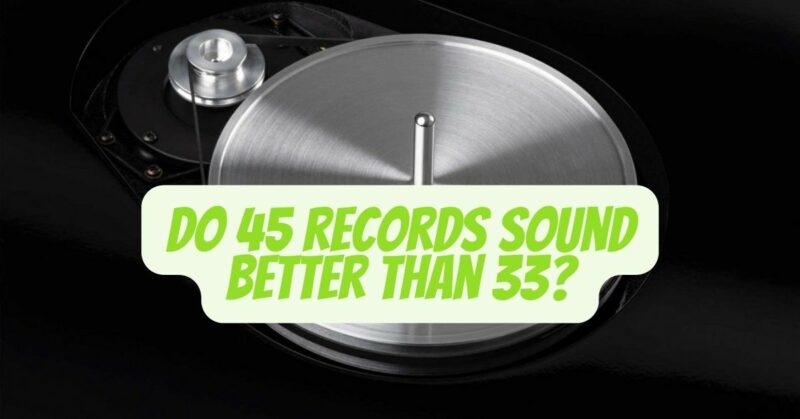The vinyl record revival has brought forth a resurgence of interest in analog sound, drawing both seasoned audiophiles and newcomers into the world of vinyl collecting. Among the factors that influence vinyl’s sonic characteristics, the record’s rotational speed is a critical consideration. Two common speeds for vinyl records are 33 revolutions per minute (RPM) and 45 RPM. But does one speed inherently sound better than the other? In this article, we’ll delve into the nuances of sound quality when comparing 45 RPM and 33 RPM vinyl records.
The Basics of RPM
Before diving into the sound quality comparison, let’s briefly recap what these speeds mean. A standard 33 RPM record completes one full rotation every 60 seconds, whereas a 45 RPM record spins faster, completing one rotation in 45 seconds. This fundamental difference in rotational speed affects how music is recorded and reproduced on vinyl.
Sound Quality Factors
1. Groove Length: One of the primary factors affecting sound quality is groove length. 45 RPM records typically have shorter grooves because the music is spread across a smaller surface area. Shorter grooves can result in less distortion and potentially cleaner sound.
2. Frequency Range: Both 33 RPM and 45 RPM records are capable of reproducing a full range of frequencies, including deep bass and crisp highs. The choice of speed does not inherently limit the frequency response. However, the effective use of the available frequency range depends on the mastering and pressing quality.
3. Track Density: 33 RPM records often feature more extended tracks per side due to their longer groove length. This can lead to a narrower track width, potentially causing inner groove distortion and a decrease in overall sound quality as the stylus moves closer to the center.
4. Dynamic Range: Dynamic range, the difference between the softest and loudest sounds in a recording, can be influenced by the record’s speed. Some argue that 45 RPM records offer a slightly wider dynamic range due to their shorter grooves, allowing for more accurate reproduction of intricate details.
Listening Preferences
Sound quality preferences can vary significantly among listeners. While some may perceive subtle differences between 33 RPM and 45 RPM records, others might not notice any significant distinction. Personal preference, the quality of the mastering and pressing, the condition of the vinyl, and the playback equipment all play pivotal roles in the listening experience.
The Role of Mastering and Pressing Quality
Ultimately, the sound quality of a vinyl record, regardless of its speed, is heavily influenced by the quality of the mastering and pressing process. A well-mastered and properly pressed 33 RPM record can deliver exceptional sound quality, just as a high-quality 45 RPM record can. Conversely, poor mastering or pressing can result in subpar sound, regardless of the speed.
Conclusion
In the debate between 45 RPM and 33 RPM vinyl records, there is no definitive answer as to which sounds better. Both speeds have their merits and potential drawbacks, but the overall sound quality largely depends on multiple factors, including mastering, pressing quality, and personal preference. The most crucial factor in enjoying vinyl records is the quality of the music itself and the pleasure derived from the analog listening experience, regardless of the speed at which the record spins. Ultimately, it’s the magic of vinyl that transcends the numbers on the label and captivates the hearts of music enthusiasts.

